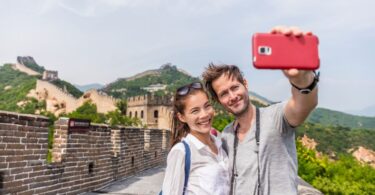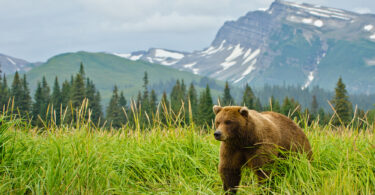Hawaii is a well-known paradise in the Pacific Ocean, renowned for its stunning landscapes, rich culture, and diverse attractions. The state is composed of eight main islands, each offering its own distinctive charm and experiences. From the bustling streets of Honolulu on Oahu to the serene beaches of Molokai, Hawaii provides something for every traveler.
Whether you’re interested in exploring volcanic craters, relaxing on pristine beaches, or diving into the local traditions at a luau, this beginner’s guide will help you navigate the islands and make the most of your Hawaiian adventure. Join us as we uncover the highlights and activities that make Hawaii an unforgettable destination for first-time visitors.
Oahu — The Gathering Place

Diamond Head, Oahu, Hawaii
Oahu, often referred to as “The Gathering Place,” is the third largest island in Hawaii and home to the state capital, Honolulu. Oahu blends urban excitement with natural beauty, offering a wealth of activities and attractions for first-time visitors.
Key City: Honolulu, the capital city, serves as the gateway to Oahu’s many wonders. It’s a hub of activity, culture, and history, making it an excellent starting point for your Hawaiian adventure.
Highlights: Waikiki Beach is one of the most famous beaches in the world, offering soft sands and gentle waves perfect for beginner surfers. Pearl Harbor National Memorial is a must-visit for history enthusiasts, commemorating the events of December 7, 1941, with poignant exhibits and the USS Arizona Memorial. Diamond Head State Monument provides a hike up an iconic volcanic crater for stunning panoramic views of Honolulu and the Pacific Ocean.
Activities: Activities on Oahu range from surfing at Waikiki Beach, where beginners can take lessons, to shopping at Ala Moana Center, the largest open-air shopping center in the world. Dining in Kapahulu offers a mix of eateries with traditional Hawaiian dishes and contemporary fusion cuisine. Start your Oahu adventure with a visit to historic sites in Honolulu, followed by a day at Waikiki Beach. In the evening, attend a luau to experience traditional Hawaiian music, dance, and food, providing a rich introduction to the local culture and history.
Maui — The Valley Isle

Waimoku Falls, Haleakala National Park, Maui, Hawaii
Maui, known as “The Valley Isle,” is famous for its stunning natural beauty and luxurious resorts. This island offers a blend of adventure and relaxation, making it a great destination for all types of travelers.
Key City: Kahului is the main city on Maui, serving as the island’s commercial and transportation hub. It’s the gateway to many of Maui’s top attractions and a great starting point for your island exploration.
Highlights: Haleakala National Park is a must-see, featuring the world’s largest dormant volcano. A sunrise tour of Haleakala is an unforgettable experience, offering awe-inspiring views as the sun rises above the clouds. The Road to Hana is another highlight, a scenic drive that takes you through lush rainforests, past waterfalls, and along the rugged coastline. Lahaina’s Front Street is a historic area filled with charming shops, art galleries, and restaurants, providing a glimpse into Maui’s rich cultural heritage.
Activities: Maui offers a variety of activities to suit every interest. Whale watching is a seasonal delight, with humpback whales migrating to the island’s warm waters from December to April. Snorkeling at Molokini, a crescent-shaped volcanic crater, provides an opportunity to see vibrant marine life in crystal-clear waters. Exploring art galleries in Lahaina and the luxury resorts of Wailea are perfect for those seeking a more relaxed pace. Start your Maui adventure with a sunrise tour of Haleakala, followed by a drive along the Road to Hana. Conclude your day with an evening in Lahaina, enjoying the local art and dining scene.
Hawaii — The Big Island

Kilauea Volcano, Hawaii Volcanoes National Park, Hawaii
Hawaii Island, often referred to as “The Big Island,” is the largest of the Hawaiian Islands, offering a wide range of landscapes and climates. This island is perfect for those seeking diverse experiences, from volcanic adventures to serene beaches.
Key City: Kailua-Kona, commonly known as Kona, is a key city on the Big Island. It’s a charming seaside place with a fascinating history, offering a great base for exploring the island’s many attractions.
Highlights: Hawaii Volcanoes National Park is a highlight, where visitors can witness the awe-inspiring power of active volcanoes, hike through lava fields, and explore the Thurston Lava Tube. The Mauna Kea Summit provides an opportunity to visit one of the world’s premier astronomical observatories and enjoy breathtaking stargazing. Akaka Falls, a stunning 442-foot waterfall, offers a picturesque hike through lush tropical rainforest. Due to the island’s vast size and diverse climates, renting a car is recommended for thorough exploration.
Activities: Activities on the Big Island include coffee farm tours in Kona, where you can learn about the production of the famous Kona coffee. Night snorkeling with manta rays in Kona is an unforgettable experience, providing a chance to see these gentle giants up close. Visiting black sand beaches, such as Punalu’u Beach, allows for a distinctive coastal experience. Start your visit with a trip to Hawaii Volcanoes National Park to get a sense of the island’s geological wonders, followed by a relaxing day at one of the beaches and an evening stargazing at Mauna Kea.
Kauai — The Garden Isle

Waimea Canyon State Park, Kauai, Hawaii
Kauai, known as “The Garden Isle,” is renowned for its lush landscapes, dramatic cliffs, and serene beaches. This island is a haven for nature lovers and those seeking a more laid-back Hawaiian experience.
Key City: Lihue is the main city and transportation hub of Kauai, offering essential services and access to many of the island’s top attractions. It’s a convenient starting point for exploring the island.
Highlights: Waimea Canyon, often called the “Grand Canyon of the Pacific,” offers breathtaking views and numerous hiking trails. The Napali Coast, with its towering cliffs and hidden beaches, is best explored by boat or helicopter. Hanalei Bay, with its crescent-shaped beach and scenic backdrop, is perfect for a relaxing day by the water.
Activities: Kauai offers a variety of activities that highlight its natural beauty. Helicopter tours provide panoramic views of the island’s rugged terrain and cascading waterfalls. Hiking the trails of Koke’e State Park allows you to immerse yourself in the island’s diverse flora and fauna. Kayaking on the Wailua River offers a peaceful way to explore the island’s interior. For a more relaxed experience, spend your days enjoying the laid-back nature of Kauai, staying in one region to fully appreciate its serene beauty.
Lanai — The Pineapple Isle

Lanai, Hawaii
Lanai, known as “The Pineapple Isle,” is the smallest publicly accessible inhabited island in Hawaii. It offers a secluded, luxurious retreat with its pristine beaches and upscale resorts.
Key City: Lanai City is the island’s central hub, featuring charming shops, restaurants, and galleries. It’s the perfect starting point for exploring Lanai’s attractions.
Highlights: Hulopoe Bay is a stunning marine preserve with clear waters ideal for snorkeling and swimming. The Garden of the Gods, a surreal landscape of rock formations, provides an otherworldly experience. Lanai City itself, with its plantation-era charm, offers a glimpse into the island’s history and culture.
Activities: Lanai offers a variety of activities tailored to those seeking both adventure and relaxation. Four-wheel tours allow visitors to explore the island’s rugged terrain and hidden gems. Horseback riding through the island’s scenic trails offers a great way to experience Lanai’s natural beauty. For those looking to unwind, luxury spa days at the island’s high-end resorts provide a perfect escape. Start your visit with a trip to Hulopoe Bay for some snorkeling, then explore the Garden of the Gods, and conclude your day with a relaxing evening in Lanai City.
Molokai — The Friendly Isle

Molokai, Hawaii
Molokai, known as “The Friendly Isle,” is the place to experience authentic Hawaiian culture and unspoiled natural beauty. This island offers a slower pace of life, perfect for those looking to escape the tourist crowds.
Key City: Kaunakakai is the main town on Molokai, providing essential services and a welcoming atmosphere. It’s a great starting point for exploring the island’s history and natural wonders.
Highlights: Kalaupapa National Historical Park offers a poignant look into the island’s past, with guided tours available to learn about its history as a leprosy settlement. Papohaku Beach is one of Hawaii’s largest white-sand beaches, ideal for a peaceful day by the ocean. The Halawa Valley, with its lush landscapes and ancient Hawaiian sites, is perfect for cultural hikes and exploration.
Activities: Molokai offers a variety of activities that emphasize its deep Hawaiian traditions and natural beauty. Mule rides down to Kalaupapa provide a memorable way to visit the historic park. Cultural hikes through the Halawa Valley offer insights into the island’s history and stunning scenery. Relaxing on some of Hawaii’s largest white-sand beaches, such as Papohaku Beach, allows for a tranquil and leisurely experience. Start your visit with a mule ride to Kalaupapa, followed by a cultural hike in the Halawa Valley, and finish your day with a relaxing afternoon on Papohaku Beach.
You Might Also Enjoy: The Harmony of the Islands: Exploring Hawaii’s Music and Dance
Niihau — The Forbidden Isle

Ni’ihau, as seen from a Kauai, Hawaii
Niihau, often called “The Forbidden Isle,” is a privately owned Hawaiian island that remains largely inaccessible to the general public. Owned by the Robinson family since 1864, Niihau preserves a way of life that has remained virtually unchanged for over a century. The island’s inhabitants primarily speak Hawaiian and live without many modern conveniences. Access to Niihau is by invitation only, typically extended to family, close friends, and select guests. This exclusivity helps maintain the island’s pristine environment and traditional lifestyle. Occasionally, limited tours are offered, allowing a rare glimpse into the culture and natural beauty of this secluded paradise.
FAQs:
Q: What is the best time of year to visit Hawaii?
A: The best time to visit Hawaii is during the shoulder seasons of spring (April to June) and fall (September to November). During these times, the weather is pleasant, and the islands are less crowded.
Q: Do I need a rental car to get around the islands?
A: Renting a car is highly recommended for exploring most Hawaiian islands, especially the larger ones like the Big Island and Maui, where public transportation is limited.
Q: Are there any travel requirements for visiting Hawaii?
A: As of now, there are no special travel requirements for visiting Hawaii for U.S. citizens. However, it’s always good to check the latest travel advisories and entry requirements before your trip.
Q: What should I pack for a trip to Hawaii?
A: Pack light, breathable clothing, swimwear, reef-safe sunscreen, a hat, sunglasses, and comfortable shoes for hiking. Don’t forget a light jacket for cooler evenings and higher elevations.
Q: Are there any health concerns I should be aware of?
A: Hawaii is generally safe, but it’s wise to use reef-safe sunscreen to protect both your skin and marine life. Be cautious of strong ocean currents and stay hydrated, especially when hiking.
Q: Can I visit all the islands on one trip?
A: While it is possible to visit multiple islands on one trip, it’s best to focus on 1-2 islands to fully enjoy your experience. Inter-island flights are available, but travel time can cut into your vacation.
Q: What is the local cuisine like in Hawaii?
A: Hawaiian cuisine is a fusion of flavors from Polynesian, Asian, and American influences. Don’t miss local specialties like poke, kalua pig, loco moco, and shave ice. Trying a traditional luau is also a great way to experience Hawaiian food and culture.
Did we leave out your favorite part of Hawaii? Tell us about it in the comments below!







Leave a Comment